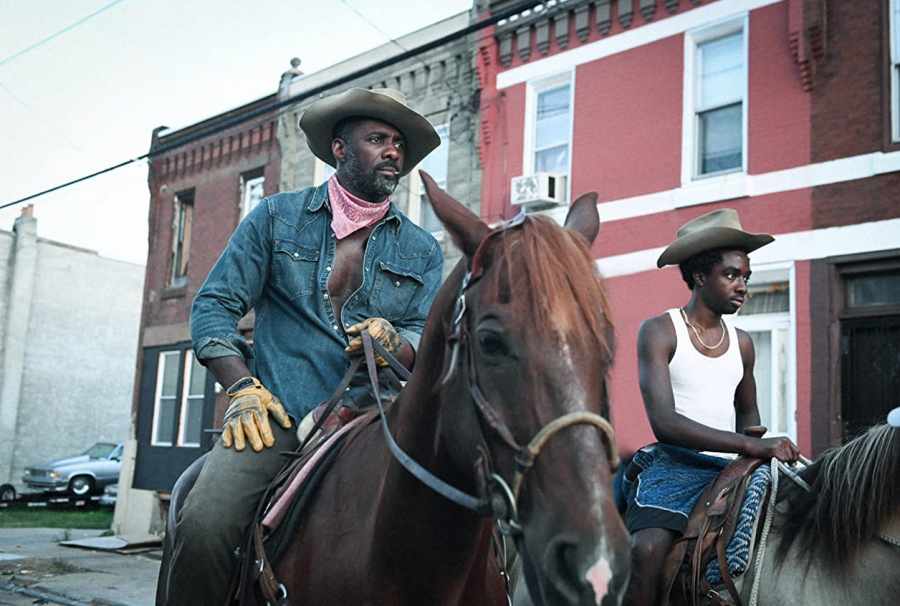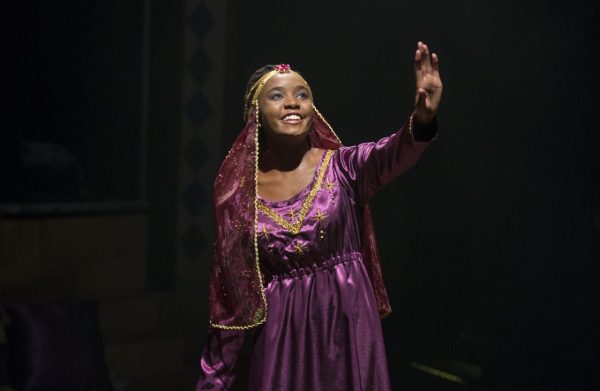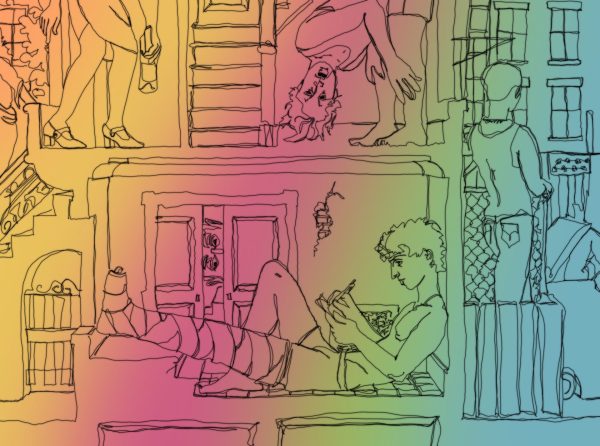REVIEW: ‘Concrete Cowboy’ puts a modern Philly spin on the Old Hollywood Western
Idris Elba and Caleb McLaughlin star as a father-son duo in “Concrete Cowboy,” based off of the book “Ghetto Cowboy” by Greg Neri.
Though Millie Bobby Brown has far and away proven herself as the breakout star among the gaggle of talented teens on “Stranger Things,” the rest of the show’s younger cast members have slowly but surely been breaking into the mainstream. Finn Wolfhard’s instantly-quotable turn in “It” gave him some serious clout beyond Netflix projects, and Gaten Matarazzo plays host to a hidden camera show, “Prank Encounters,” which is heading into its second season. But, perhaps taking the biggest genre leap since “Stranger Things” is Caleb McLaughlin, whose latest film “Concrete Cowboy” premiered on Netflix last Friday, April 2. Though McLaughlin’s spirited lead performance proves he has the juice to be a bona-fide movie star in the making, the film itself from a severe identity crisis and a lack of substantive direction. “Concrete Cowboy” touches on some intriguing concepts, certainly, but can never commit to picking one strong story and running with it – a weakness which results in a thoroughly mediocre end result.
Based on the novel “Ghetto Cowboy” by Greg Neri and inspired by the true story of the Philadelphia-based Fletcher Street Urban Riding Club, “Concrete Cowboy” follows Detroit native Cole (McLaughlin), a troubled young man who’s sent away to live with his estranged father Harp (Idris Elba) for the summer. Though Cole immediately falls in with Smush (Jharrel Jarome), a drug dealer, he eventually discovers and grows to appreciate his father’s love for horseback riding, and finds himself a part of the tight-knit community of ‘urban cowboys’ known as the Fletcher Street Riding Club.
The most magnetic aspect of “Concrete Cowboy” is the film’s premise. Both the film and the novel it’s based on are inspired by the aforementioned Fletcher Street Urban Riding Club — a number of whose members play supporting roles as cowboys in the film as well. “Concrete Cowboy” is constantly telling us about the history and the significance of the Philly cowboys, but it doesn’t show just what makes them so special — we get glimpses of it every now and then, but there’s never a moment where the film really feels as if it’s truly capitalizing on the goldmine of a story it has on its hands.
Given how significant cowboy culture is to the mythos of the U.S., and with the uniqueness of such a tight-knit group keeping the tradition alive in an urban area like Philadelphia, one would think that “Concrete Cowboy” would want to play up just how incredible of a phenomenon this is, and dig into the history, culture and social inner workings of the group.
Unfortunately, though, the film is instead structured around the story of the fictional Cole, whose narrative is about as by-the-numbers as a “boy and his pet” movie can get — he’s got a streak of bad behavior because he comes from a broken home, but suddenly when he finds kinship with an animal and discovers a new side of himself. It’s nothing that hasn’t been done — and that hasn’t been done better — just this time around, it’s a Black kid with a horse in Philadelphia as opposed to a white kid with a mangy stray in the suburbs.
Even more frustrating about the banality of the film’s narrative is that we do get glimpses of the vibrancy of the Fletcher Street Riders — in addition to filling out the supporting cast, their interviews also play over the film’s end credits — and those five minutes of soundbites as the credits are rolling are more genuine and engrossing than the rest of the film combined.
Missed opportunities aside, though, “Concrete Cowboy” presents a number of interesting concepts, none of which are dug into with any significant amount of time or depth. Cole has practically no character development to speak of, nor do we even get a sense of who he is before the film starts, other than “bad kid from Detroit.” His father Harp, too, is bizarrely underdeveloped — he’s practically a minor character until halfway through the film when director Ricky Staub seemingly realized that “Oh wait, I cast Idris Elba in my movie, I guess I have to use him.” The strongest of the bunch is Jharrel Jerome’s troublemaking Smush, who, despite being a walking stereotype, does have some depth to his character thanks to a committed performance from Jerome. Part of why the characters of “Concrete Cowboy” don’t work is because the film wants to have it four ways: to be a story about a boy and his horse, a story about a boy trying to reconnect with his father, a story about boy trying to decide between living on the edge or on the straight and narrow and a story diving into the horseback riding culture in Philadelphia.
But the film just can’t seem to decide which of those ideas it likes most and attempts to shoehorn them all into an hour and 50 minutes, resulting in each individual thread being half-baked and the end product coming out a murky, tonally flat jumble. It’s easy to picture how an ambitious narrative like this could be presented well as a novel where readers get 10-15 hours to meet all the characters and engross themselves in the world of the Philly cowboys, but in a film landscape, time is money, and “Concrete Cowboy” can’t figure out how to budget it properly.
In terms of aesthetic quality, though, “Concrete Cowboy” is much more formidable. The film has a distinct tonal (if not one-note) theme to it, which carries over nicely into the visuals and score. The cinematography is memorable and often innovative for a Netflix film, and the score alternates between vibrant strings and lazy, warm brass. The costumes and hair and makeup design are also particularly effective at painting a portrait of such a unique subset of American culture. If “Concrete Cowboy” were an art installation about the riders as opposed to a film, it would have real promise.
In the end, though, “Concrete Cowboy” tries to juggle too many aspects of a multi-faceted community, and ends up an unremarkable if attractive package that audiences end up with is a satisfying enough vehicle for developing McLoughlin as a lead, but not an entertaining or moving viewing experience.















